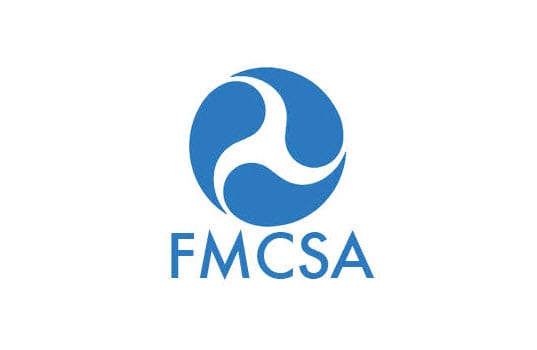Ensuring the safety of transported goods is paramount to prevent accidents and injuries. All items carried on a truck, from general cargo to equipment essential for operations, must be properly secured to avoid potential hazards.
-
Familiarize with Regulations: Cargo securement standards outline the minimum safety requirements for various commodities. Obtain these regulations at no cost from the FMCSA in the U.S. or the Canadian Council of Motor Transport Administrators in Canada.
-
Refer to Illustrated Handbook: Invest in a comprehensive cargo securement handbook, containing regulations from both the U.S. and Canada. Order "Practical Cargo Securement: Guidelines for Drivers, Carriers & Shippers" from CVSA’s store for detailed reference.
-
Driver’s Handbook Access: Download the Driver’s Handbook on Cargo Securement and distribute copies to your drivers. Incorporate relevant sections into your company's Driver’s policy and procedures manual. Access the handbook at: Driver's Handbook on Cargo Securement
-
Secure all Equipment and Load: Improper securement of equipment and cargo is a common violation. Ensure proper fastening of items like dunnage, tarps, blocks, chains, and other tie-downs.
-
Tie Downs Inspection: Regularly inspect tie downs for wear and damage. CVSA’s North American Standard Out-of-Service Criteria provides guidelines for identifying defects. Discard worn-out tie downs promptly.
-
Brace and Block Cargo: Proper bracing and blocking of cargo within trailers prevent shifting, which can lead to accidents and equipment damage. Shifted loads indicate violations affecting safety ratings.
-
Adopt Best Practices: Follow established best practices for cargo securement, especially for unique shipments. Ensure proper containment, immobilization, or securing of the load to maintain vehicle stability and maneuverability. Consider hiring professionals for specialized vehicle loading if necessary.
-
Access Regulations Online: Access FMCSA cargo securement regulations at: FMCSA Cargo Securement Regulations
Adhering to cargo securement guidelines enhances safety and minimizes risks during transportation operations.
FMCSA Proposes Removing Medical Examiners from National Registry
The Federal Motor Carrier Safety Administration (FMCSA) is proposing the removal of approximately 15,727 Medical Examiners from the National Registry of Certified Medical Examiners. This action is due to their failure to access their National Registry account using login.gov and update the necessary profile information.
Medical Examiners (MEs) who have not utilized login.gov to access their National Registry account are unable to report the results of physical qualification examinations for commercial motor vehicle (CMV) drivers, receive communications from the FMCSA, or fulfill required training obligations. Consequently, MEs removed from the National Registry will lose their certification to conduct physical qualification examinations for CMV drivers.
MEs are given until February 23, 2024, to create a login.gov account and ensure that their contact information is updated in their National Registry profile. Failure to complete these actions by the specified date will result in the removal of MEs from the National Registry effective February 26, 2024.
FMCSA Updates Guidance for Medical Examiners
The Federal Motor Carrier Safety Administration (FMCSA) has recently revised its guidance for Medical Examiners responsible for assessing the physical qualifications of commercial motor vehicle drivers. These updates have been detailed in the latest edition of the Medical Examiner’s Handbook.
Key changes and clarifications to the guidance for Medical Examiners include:
- Clarification on the individual's right to receive a copy of the Medical Examination Report Form, MCSA–5875, regardless of who paid for or requested the examination. However, the guidance emphasizes that employers may obtain copies of the form with the employee’s consent.
- Requirement for Medical Examiners to retain copies of the driver’s physical qualification certificate, Form MCSA-5876, for a minimum of three years from the date of examination, and to provide a copy to prospective or current employers upon request.
- Provision for drivers to seek a second opinion and physical qualification examination from another Medical Examiner, with the expectation that the same medical information will be provided to both examiners.
- Mandate for Medical Examiners to report examination results to the National Registry of Certified Medical Examiners, even if the examination is not completed.
- Clarification on the alternative vision standard, which applies only if the worse eye cannot be corrected to meet the distant visual acuity standard with corrective lenses.
- Emphasis on the exclusion of DOT-regulated drug and alcohol testing from the physical qualification examination, although it may be conducted concurrently for pre-employment or other authorized purposes.
- Recognition of federal law prohibiting the enforcement of requirements for screening, testing, or treating CMV operators for sleep disorders without proper rulemaking proceedings. The guidance provides considerations for Medical Examiners in assessing individuals for obstructive sleep apnea (OSA).
- Removal of the hypertension table from the handbook due to vagueness, with ongoing research to potentially update the guidance based on future findings.
- Additional information provided for Medical Examiners assessing individuals with non-insulin-treated diabetes mellitus, along with plans to introduce a new Non-Insulin-Treated Diabetes Mellitus Assessment Form pending approval from the Office of Management and Budget.
These revisions aim to enhance clarity and effectiveness in the medical qualification process for commercial motor vehicle drivers.










